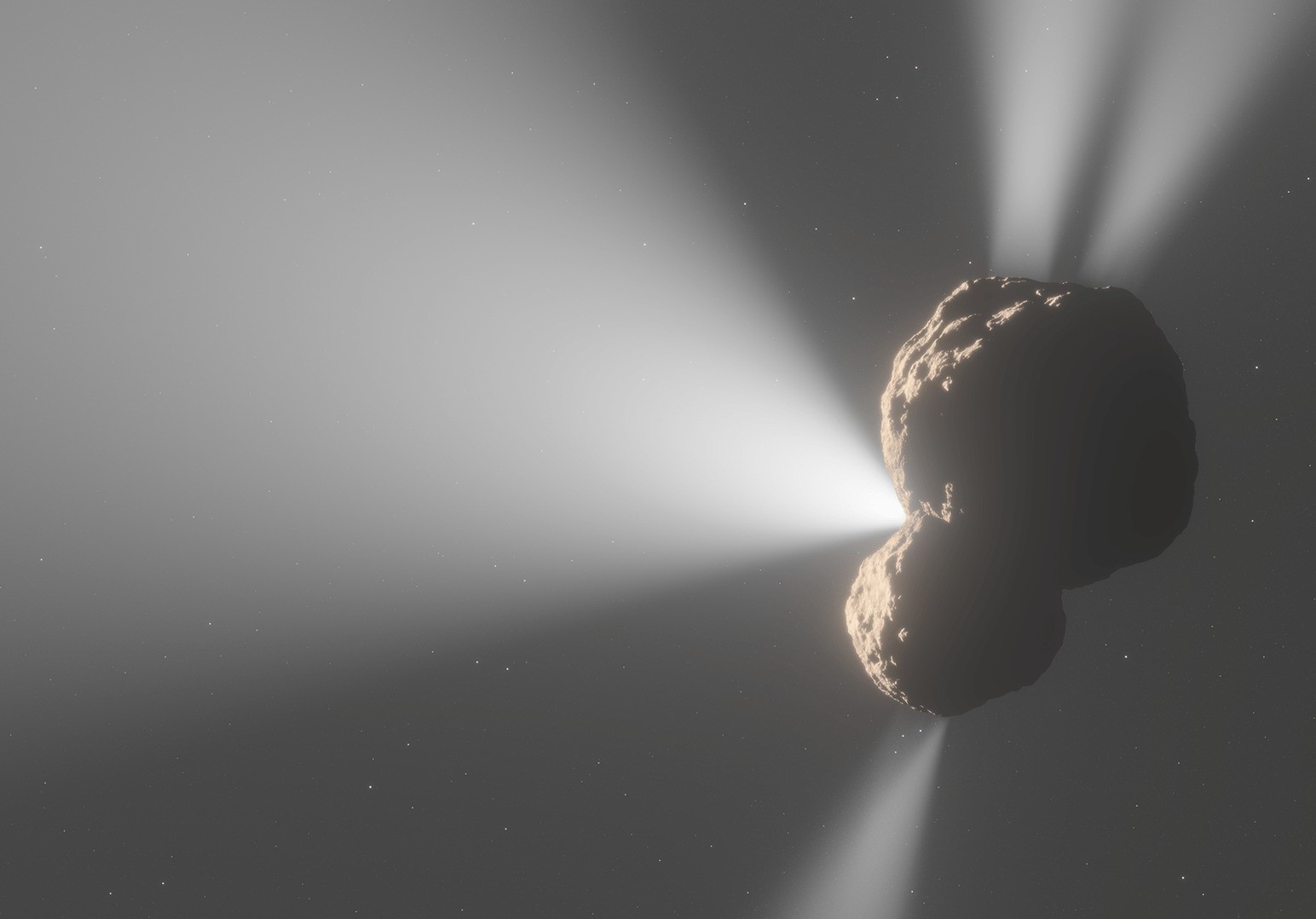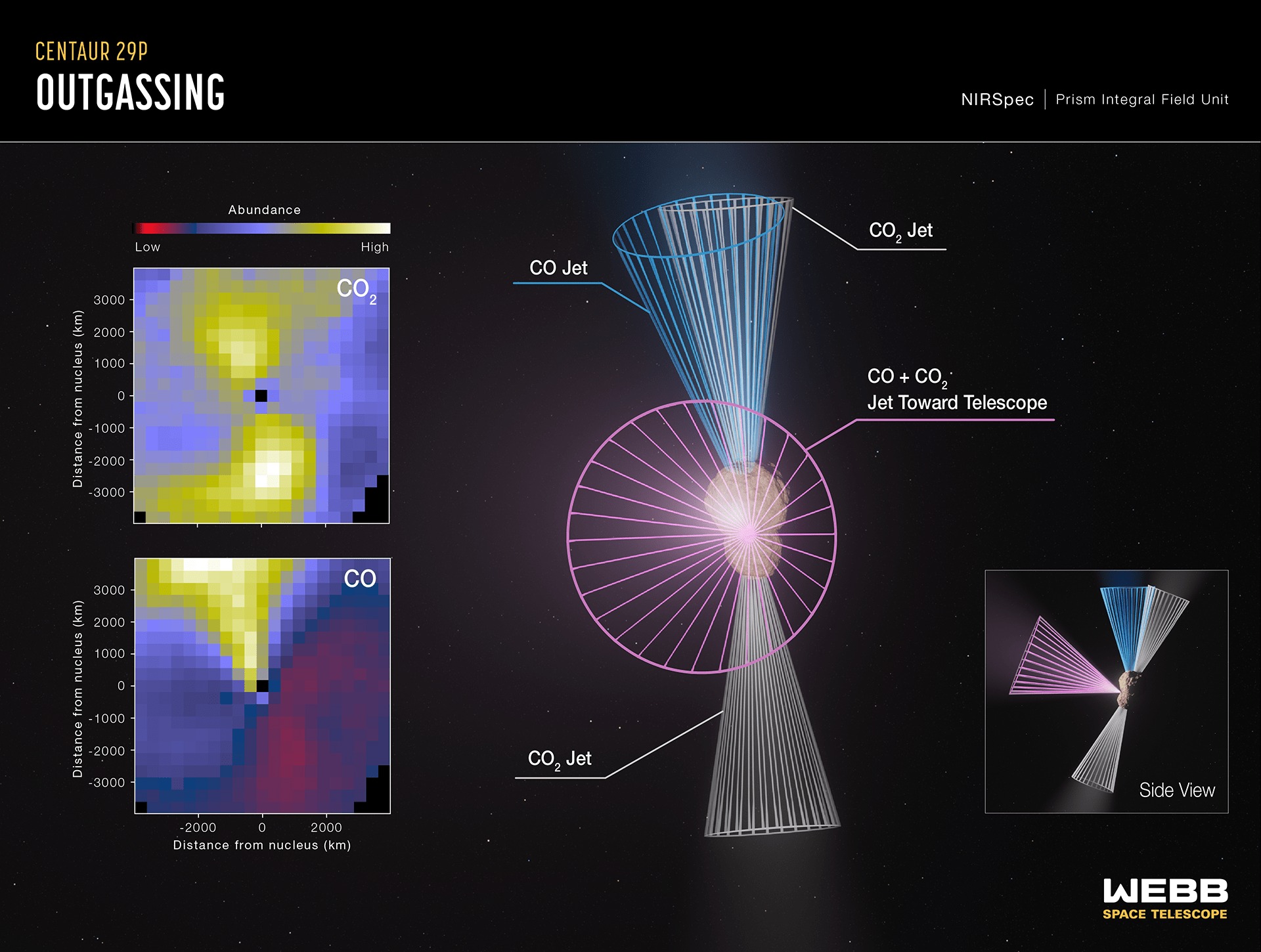Centaur-class comet 29P/Schwassmann-Wachmann 1, discovered in 1927, remains a mystery to scientists due to its regular and intense outbursts every 6-8 weeks. Recent observations with the James Webb Space Telescope have revealed three powerful jets of gas erupting from this object.

Spectral analysis revealed two jets of carbon dioxide and a new jet of carbon monoxide pointing toward the Sun. This discovery suggests that Centaur 29P is composed of several parts of different origins, challenging our ideas about the formation of objects in the Kuiper belt.
NASA researchers, among them Geronimo Villanueva and Sara Faggi, note that such dramatic differences in the composition of gases indicate the complex history of the object. There is a chance that the Centaur was formed by the merger of several different bodies. This provides new data for understanding the evolution of the Solar System and its early stages.
Centaurs are unique objects that have properties of both comets and asteroids. They first orbited beyond the orbit of Neptune, but the gravitational forces of the giant planets shifted them closer to the Sun. They are now between the orbits of Jupiter and Neptune, but still retain the characteristics of trans-Neptunian objects and comets.
The research team has modeled the eruption of the gas jets, suggesting that they originate from different parts of comet 29P’s nucleus. The angles of the outbursts may also indicate the complex structure of the object, consisting of separate elements. However, the exact causes of the outbursts remain unknown.

Scientists plan to continue observing 29P/Schwassmann-Wachmann 1 to better understand its activity mechanism. Study co-author Adam McKay believes that long-term observations will delve deeper into the nature of this mysterious object and its features.
We previously reported on how the rings of an asteroid between the orbits of Saturn and Uranus are held together by an unseen object.
According to NASA


